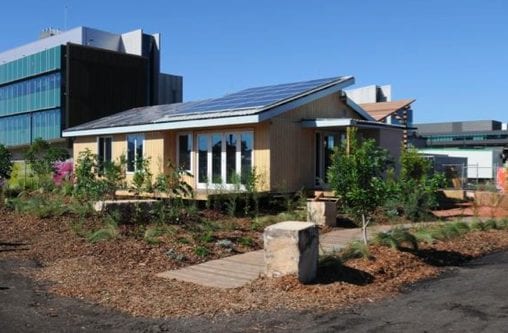The University of Wollongong (UoW) has beaten 20 finalists to win the 2013 Solar Decathlon in Datong, China.
A team of 33 students from UoW and TAFE Illawarra designed, built and operated the ‘The Illawarra Flame’, a retrofitted Australian fibro house.
Students were required to build and operate a house that is both advanced and appealing as well as energy efficient and cost effective – costing approximately $300,000 to build in Australia.
The Illawarra Flame was built to be a Net Zero Energy home, generating more energy than it consumes.
The University team built the house in Australia then disassembled and shipped it to Datong, China for the two-week decathlon that has become the world’s largest sustainable building research and innovation competition.
The UoW team finished with score of 957.6 out of a possible 1000 points as well as receiving first place awards in categories such as engineering, architecture and solar application.
Not only was it the first time an Australian team has won, but also the first time an Australian team has made it to the finals. Furthermore, the UoW team was the only entrant to submit an already existing house, altering the original layout to include vertical gardens, rainwater capture and increasing airtightness.
The finished house highlights passive design concepts such as east-oriented for warm light in the winter and a raised roof for cooling ventilation in the summer.
Up-cycled charity shop furniture, double glazed windows and native drought resistant plants are used through the home adding to the environmentally friendly nature of the project.
Illawarra Flame highlights the importance of using the existing housing supply already in Australia and the notion that retrofitting is neither expensive nor complex.
Only about 2% of houses are replaced every year in Australia emphasizing the point that adjustments to inefficient older houses are more likely than building new homes.
To tick another box on the already innovative project, the Illawarra Flame is targeted at 65 or older empty nesters, who will account for almost 25% of Australia’s population in 2025. The Flame house will allow for downsizing to a cleaner, smarter home without sacrificing luxury.
The Solar Decathlon China is hosted but the US Department of Energy, the Chinese National Energy Administration and Peking University, China. Schneider Electric, a major sponsor of the decathlon as well as a leader in renewable energy and energy efficiency, donated products (such as fans and light sensors) to the winning team as well as developing a micro-grid to power the University homes in Datong.
This University of Wollongong project not only starts the conversation on sustainable building and retrofitting but also what innovative and feasible technologies are available to the future homes of Australia.
To learn more about the Illawarra Flame or the Solar Decathlon click here.











